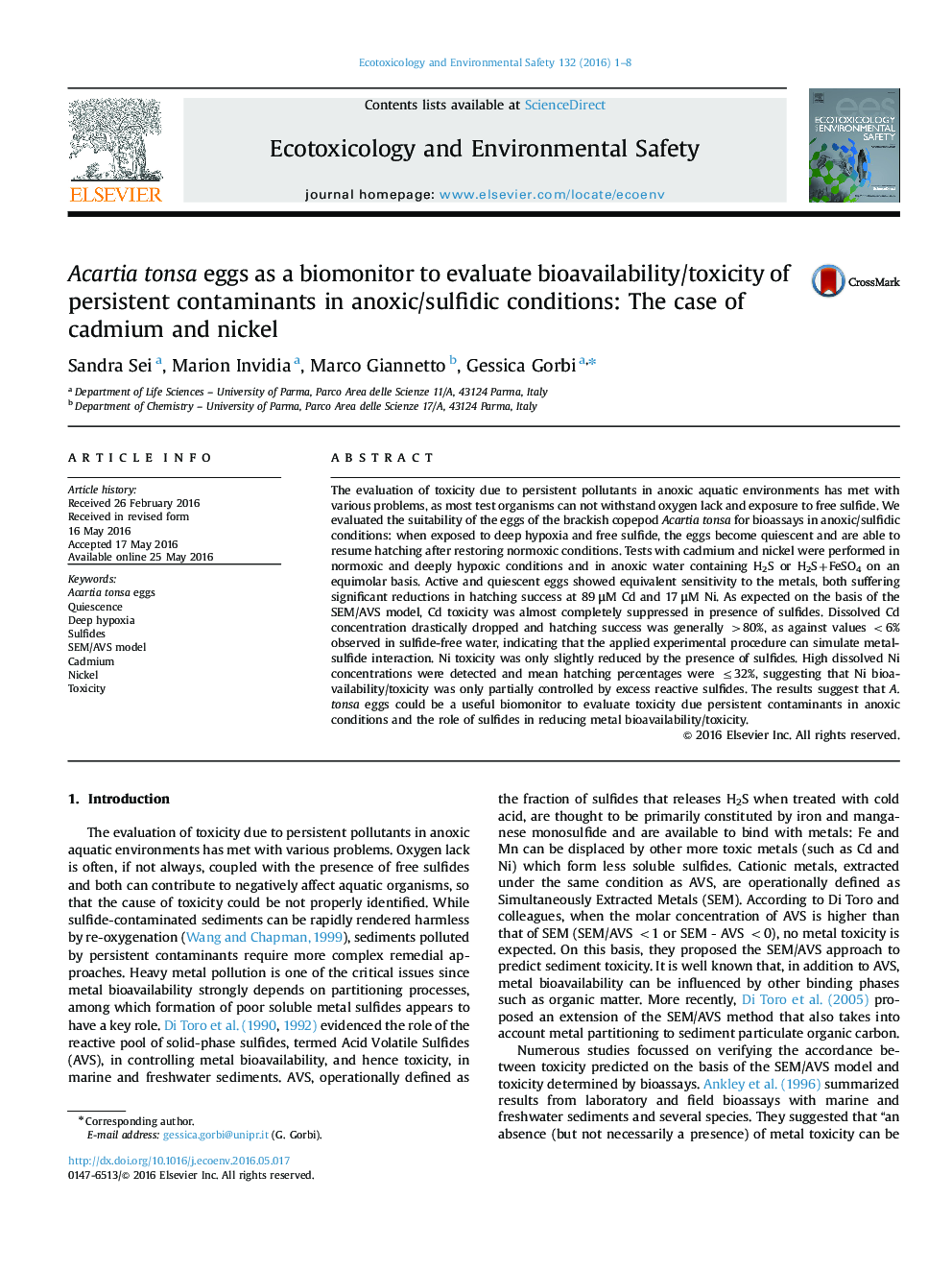| کد مقاله | کد نشریه | سال انتشار | مقاله انگلیسی | نسخه تمام متن |
|---|---|---|---|---|
| 4419104 | 1618931 | 2016 | 8 صفحه PDF | دانلود رایگان |

• Active and quiescent eggs showed the same sensitivity to Cd and Ni.
• Cd toxicity was nullified by dissolved sulfides and FeS(s) according to SEM/AVS model.
• The applied experimental procedure can simulate metal-sulfide interaction.
• Ni bioavailability/toxicity is only partially controlled by excess reactive sulfides.
• A. tonsa eggs could be a biomonitor to evaluate toxicity in anoxic-sulfidic conditions.
The evaluation of toxicity due to persistent pollutants in anoxic aquatic environments has met with various problems, as most test organisms can not withstand oxygen lack and exposure to free sulfide. We evaluated the suitability of the eggs of the brackish copepod Acartia tonsa for bioassays in anoxic/sulfidic conditions: when exposed to deep hypoxia and free sulfide, the eggs become quiescent and are able to resume hatching after restoring normoxic conditions. Tests with cadmium and nickel were performed in normoxic and deeply hypoxic conditions and in anoxic water containing H2S or H2S+FeSO4 on an equimolar basis. Active and quiescent eggs showed equivalent sensitivity to the metals, both suffering significant reductions in hatching success at 89 μM Cd and 17 μM Ni. As expected on the basis of the SEM/AVS model, Cd toxicity was almost completely suppressed in presence of sulfides. Dissolved Cd concentration drastically dropped and hatching success was generally >80%, as against values <6% observed in sulfide-free water, indicating that the applied experimental procedure can simulate metal-sulfide interaction. Ni toxicity was only slightly reduced by the presence of sulfides. High dissolved Ni concentrations were detected and mean hatching percentages were ≤32%, suggesting that Ni bioavailability/toxicity was only partially controlled by excess reactive sulfides. The results suggest that A. tonsa eggs could be a useful biomonitor to evaluate toxicity due persistent contaminants in anoxic conditions and the role of sulfides in reducing metal bioavailability/toxicity.
Journal: Ecotoxicology and Environmental Safety - Volume 132, October 2016, Pages 1–8